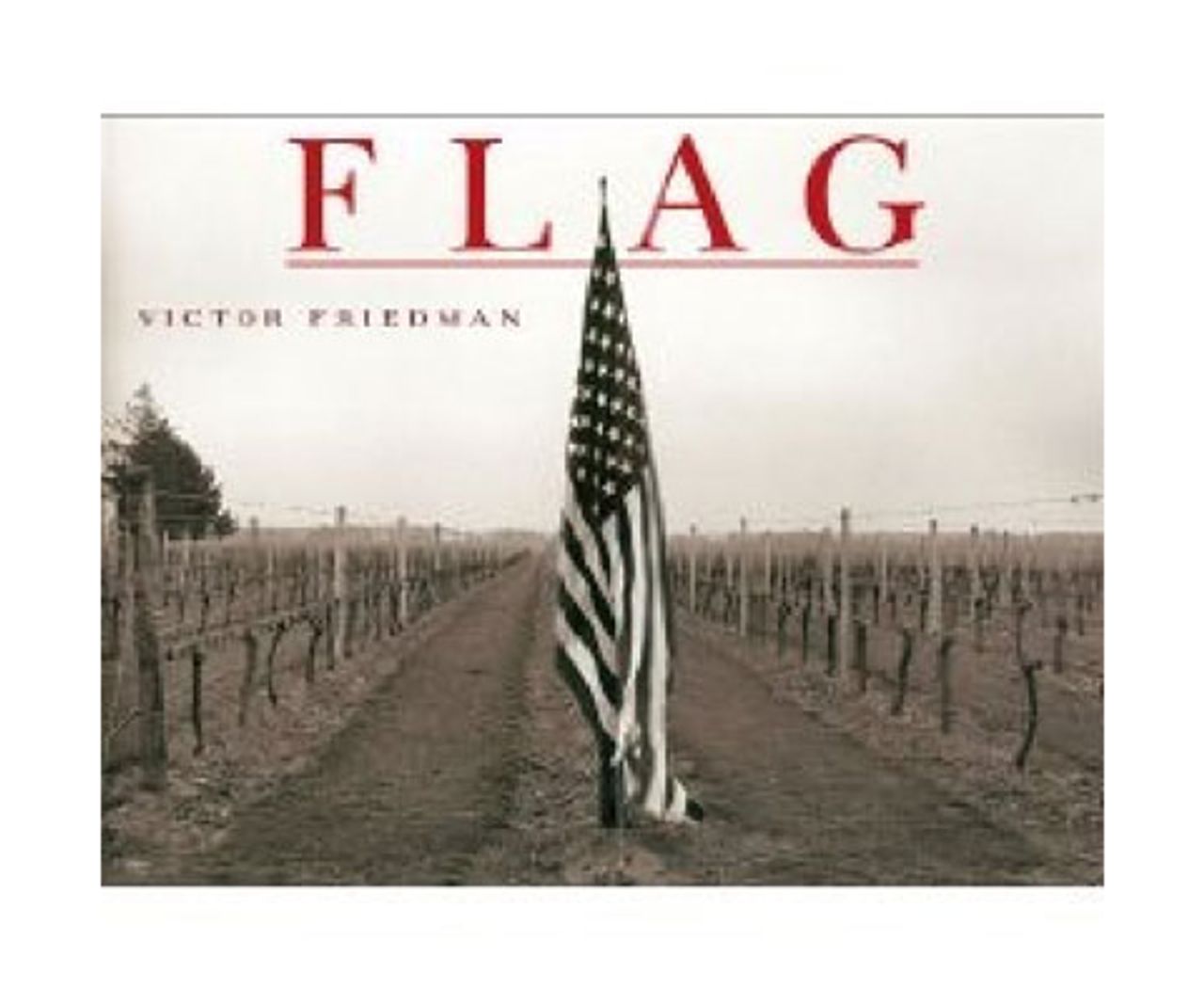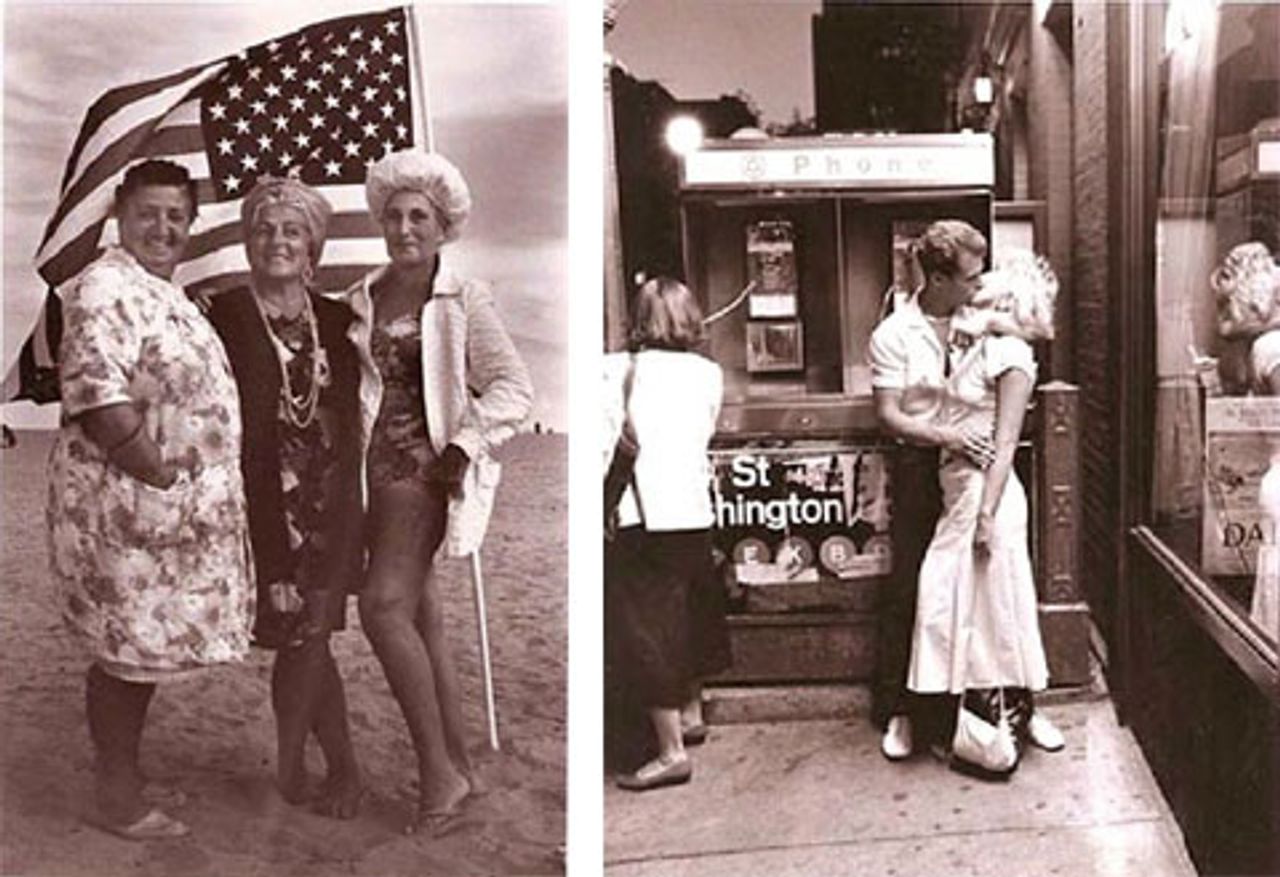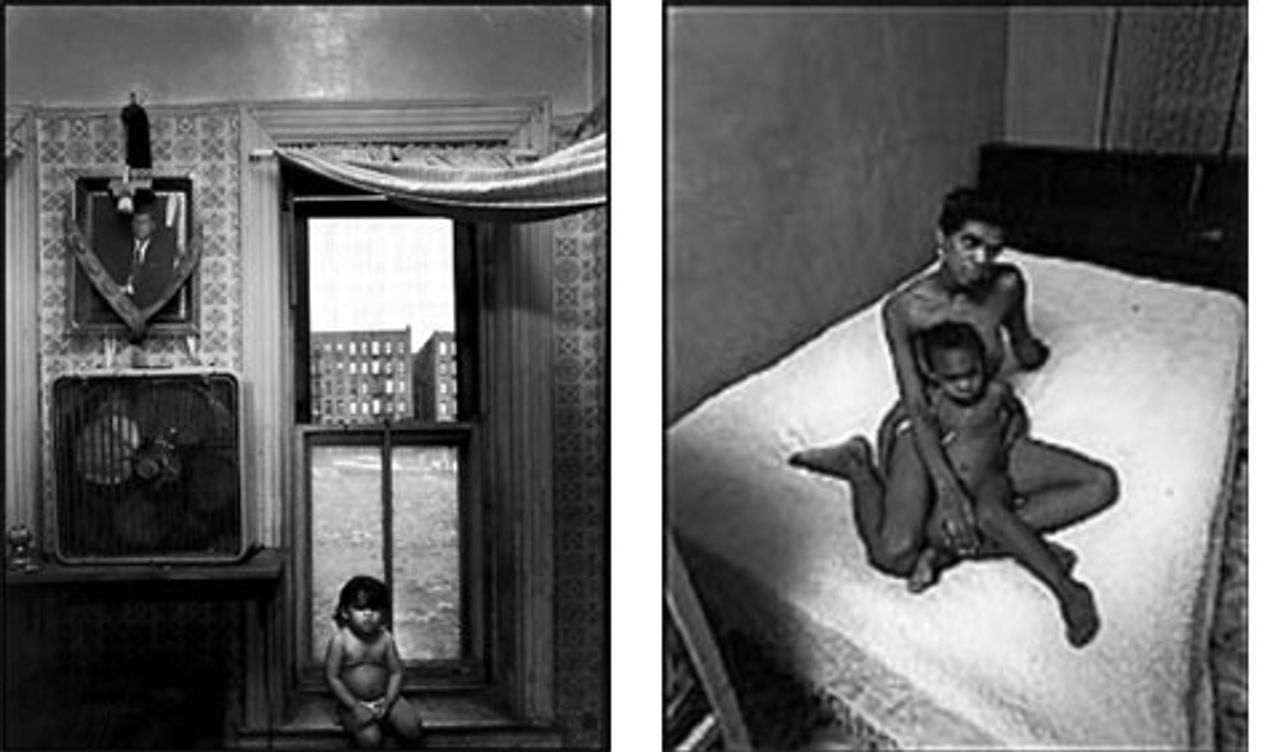A few months ago, I suggested that Paul Graham’s exhibit of photographs at the Museum of Modern Art in New York City [Game Over, or, Where shall we look? 5 June 2009] pointed toward a place to look in the visual arts for real engagement with our society. I suggested photography. More and more this notion seems convincing. Exhibitions of American documentary photography are proliferating in galleries along 57th Street in Manhattan, as well as in commercial Chelsea and in leading city museums and bookshops. Right now, some important photography exhibits tell us a lot about Americans—who we have been and what was happening during our lifetime.
A new book published by Penguin, entitled Flag, with photographs by New York native Victor Friedman, was launched with an exhibit of his work at The Old Print Shop on Lexington Avenue. That neighborhood landmark near 30th Street is the authoritative source for American visual arts such as Currier and Ives prints, Audubon prints, antiquarian maps, old books, views of Manhattan coastlines and harbors, photographs, and more. It is an established source of high-quality Americana.
 This connection links it with Friedman’s photographs of flags, collected by the photographer from hundreds made during the past 45 years. These photos owe more to his eye for human behavior than to patriotism. He has documented the lives of New Yorkers in their habitats: groups, couples, small business owners, a Greenwich Village couple dressed in the sharp style of the ’60s, smiling children posing in front of a Coney Island fish market, others on the stoops of brownstones and, in general, around the town, fleeting glimpses made permanent in black-and-white prints. The Polar Bear Ladies of 1967 smiling at him in front of the flag are typical of Friedman’s benevolent record of Americans: they are intimate connections, caught in magical accidents of composition. Through this unpretentious yet sensitive view of life as it is really lived, Friedman created a body of work that documents a segment of our society from the ’60s to the ’80s, in his own personal locales of Brooklyn, Greenwich Village, Long Island and Maine.
This connection links it with Friedman’s photographs of flags, collected by the photographer from hundreds made during the past 45 years. These photos owe more to his eye for human behavior than to patriotism. He has documented the lives of New Yorkers in their habitats: groups, couples, small business owners, a Greenwich Village couple dressed in the sharp style of the ’60s, smiling children posing in front of a Coney Island fish market, others on the stoops of brownstones and, in general, around the town, fleeting glimpses made permanent in black-and-white prints. The Polar Bear Ladies of 1967 smiling at him in front of the flag are typical of Friedman’s benevolent record of Americans: they are intimate connections, caught in magical accidents of composition. Through this unpretentious yet sensitive view of life as it is really lived, Friedman created a body of work that documents a segment of our society from the ’60s to the ’80s, in his own personal locales of Brooklyn, Greenwich Village, Long Island and Maine.
 Victor Friedman: Polar Bear Ladies, Couples
Victor Friedman: Polar Bear Ladies, Couples Friedman fits in the tradition of Walker Evans, now dubbed the “dean of American documentary,” and he shares a kind of perception with the New York photographer Helen Levitt, who died in March 2009, just before a retrospective of her work at the Laurence Miller gallery. Although contemporaries knew and admired her, since that retrospective and its catalog, Levitt’s reputation has spread—even to Europe (she was included in the 2009 Viennese exhibit entitled Americans 1940-2006.)
Levitt was a quiet observer of the Brooklyn neighborhood where she was born. Her black-and-white photos of the 1940s are unique remnants of that era. The streets are lined with stoops, not condos, and the empty streets are playgrounds. Sometimes there are carts rather than cars in the streets. She dwelt on Americans caught in unguarded moments, in old neighborhoods, and she left stories of Americans in everyday life, graceful and expectant.
 Helen Levitt
Helen LevittRecently, the Howard Greenberg gallery on 57th Street re-created Bruce Davidson’s famous photo-essay East 100th Street, shown at the Museum of Modern Art in 1970. This faithful replica of the former exhibit makes it possible to relive and re-imagine the effect his pictures had at the time. The stunning photographs, taken in 1966-1968, awakened many viewers to the living conditions of African-Americans. Beautifully composed and lit, and seemingly made with the cooperation of their subjects, these photographs are social documents, intimate glimpses of life “uptown,” but also works by an artist.
 Bruce Davidson
Bruce DavidsonSeeing these moments of our recent past is like entering an old, empty house. When the door opens, a breeze catches a pile of papers on a table and they float off, one by one, into the air. This flurry of images floats all around us while we catch one or two to look at. It is our past life. It was always there; now we see it because a witness with a camera noticed something.
Virginia Smith is a former Photo Editor of CBS Records, where she worked with Gene Smith and other prominent photographers.
